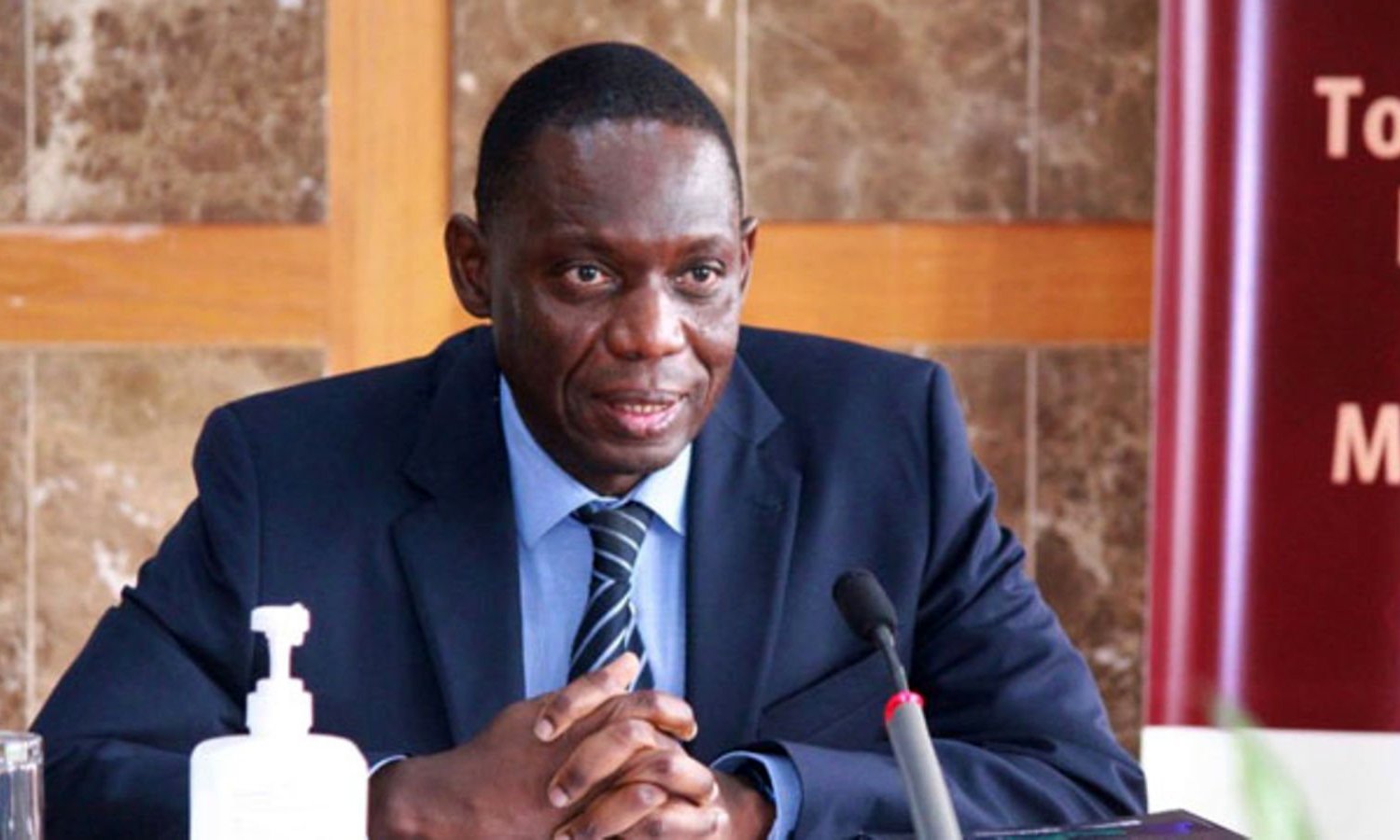
President Museveni (centre) and First Lady Janet Museveni (2nd left) interact with Speaker of Parliament Anita Among (left) and her deputy Thomas Tayebwa (right) after the National Budget presentation at Kololo Ceremonial Grounds on June 13, 2024. PHOTO | DAVID LUBOWA
He might not be into slim-fit apparels or used clothing for that matter, but President Museveni used a metaphor from the industry to underscore a point about Uganda’s public debt stock that is threatening the Shs100 trillion mark.
“I don’t believe in borrowing. I believe in cutting our coat according to our cloth,” he said.
Per the Auditor General’s latest report, Uganda’s debt as of December 2023 stood at an eye-watering Shs97.4 trillion. The International Monetary Fund forecasts that the debt will increase to approximately Shs110.6 trillion by the end of Financial Year (FY) 2024/2025, raising concerns about how sustainable it is.
“Our debt-to-GDP ratio before Corona (Covid-19) was 30 percent,” Mr Museveni told a special House sitting at Kololo Independence Ground on Thursday.
Finance minister Matia Kasaija said the country’s debt-to-GDP ratio, as of June 2023, stood at 46.9 percent. It is, he adds, projected to end at 47.9 percent at the end of FY2023/2024 later this month. While some say the dashboard is flashing red, budget wonks find solace in the fact that the figure is below the 52.4 percent threshold provided for in the Charter for Fiscal Responsibility for the financial year 2023/2024, and less than 50 percent of GDP government policy target for debt sustainability.
In his Budget Day speech, Minister Kasaija said as of December 2023, Uganda’s total public debt stood at Shs93.38 trillion ($24.69 billion). Of this amount, external debt was Shs55.37 trillion ($14.64 billion) while domestic debt was Shs38.01 trillion ($10.05 billion). The public debt, he further disclosed, is projected at Shs97.638 trillion ($25.716 billion) by June 30.
“Although our debt has increased, it is still sustainable and the government is committed to keeping it sustainable,” Minister Kasaija said.
With the size of the economy now estimated at Shs202 trillion ($53.3 billion), up from Shs184.3 trillion ($48.8 billion) registered in FY2022/2023, President Museveni appears to suggest that with the right metric, such as the purchasing power parity (PPP), an analysis metric used to compare economic productivity and standards of living between countries, Uganda would have broken into a middle income by now.
“As we speak, Mr Kasaija is of the view that Uganda has met the requirements to graduate from the category of Least Developed Countries (LDCs) and at the same time also moved from the category of low human development to medium human development,” he said, adding that once the country begins commercial production of oil next year, borrowing will be an afterthought.
Employment
While critics have called out his government for superintending over jobless growth, Mr Museveni said there are plenty of jobs for those looking in the right direction. He added that commercial agriculture has plenty of jobs, testifying that an acre can house up to 15 people and “should seven million Ugandans take to commercial farming, there will be more jobs than the population of the country.”
The President also promised to continue supporting Uganda Development Bank, the Parish Development Model programme, the Agricultural Credit Facility, and the Small Business Recovery Fund to provide capital for wealth creation. He also said plenty of jobs are available in the manufacturing and service sector, adding that industrialisation efforts are also being undertaken mainly through the private sector. The State, he further noted, is playing a de-risking role.
To further reduce lending rates, the Museveni administration will continue to provide long-term affordable capital through various interventions “even double it if need be.”
In particular, the government will continue to capitalise the Uganda Development Bank and other government programmes to act as alternatives to money lenders who, noted Minister Kasaija, “focus on capitalising importers and not those involved in value-addition.” The other sector to look out for in employment, the Finance minister disclosed, is ICT whose infrastructure will be expanded.
Optimistic
The President said rehabilitation of the Metre-Gauge Railway and commencement of the Standard Gauge Railway will save the roads from over use, as well as support export of cargo within the country and the region, supporting movement of value-added products across the regional market.
Although in the next financial year, the economy is projected to get back to Uganda’s steady-state growth potential of between 6.4 and seven percent, and double digit over the next five years, Mr Museveni said he thinks this can be accelerated once oil tap begins to flow, freeing government from borrowing for infrastructure development as it will make available about $2 billion in the disposal of the executive arm of government.
It is projected that next Financial Year, 2024/2025, Uganda’s GDP will further expand to Shs25.5 trillion ($60 billion). These numbers exclude the anticipated oil and gas revenues, as well as the planned interventions to grow the economy tenfold, but with oil revenue up for grab, the sky will be the limit in terms of the country’s growth, according to President Museveni.
Even with projected domestic revenue out-turn for FY2023/2024 of Shs27.725 trillion against the target of Shs29.672 trillion, resulting in a revenue shortfall of over Shs1.9 trillion, President Museveni didn’t seem worried, referencing oil revenue as the fallback position for key budget item support.





